1lumen selects and reviews products personally. We may earn affiliate commissions through our links, which help support our testing.
Wuben E19 Review: Penlight
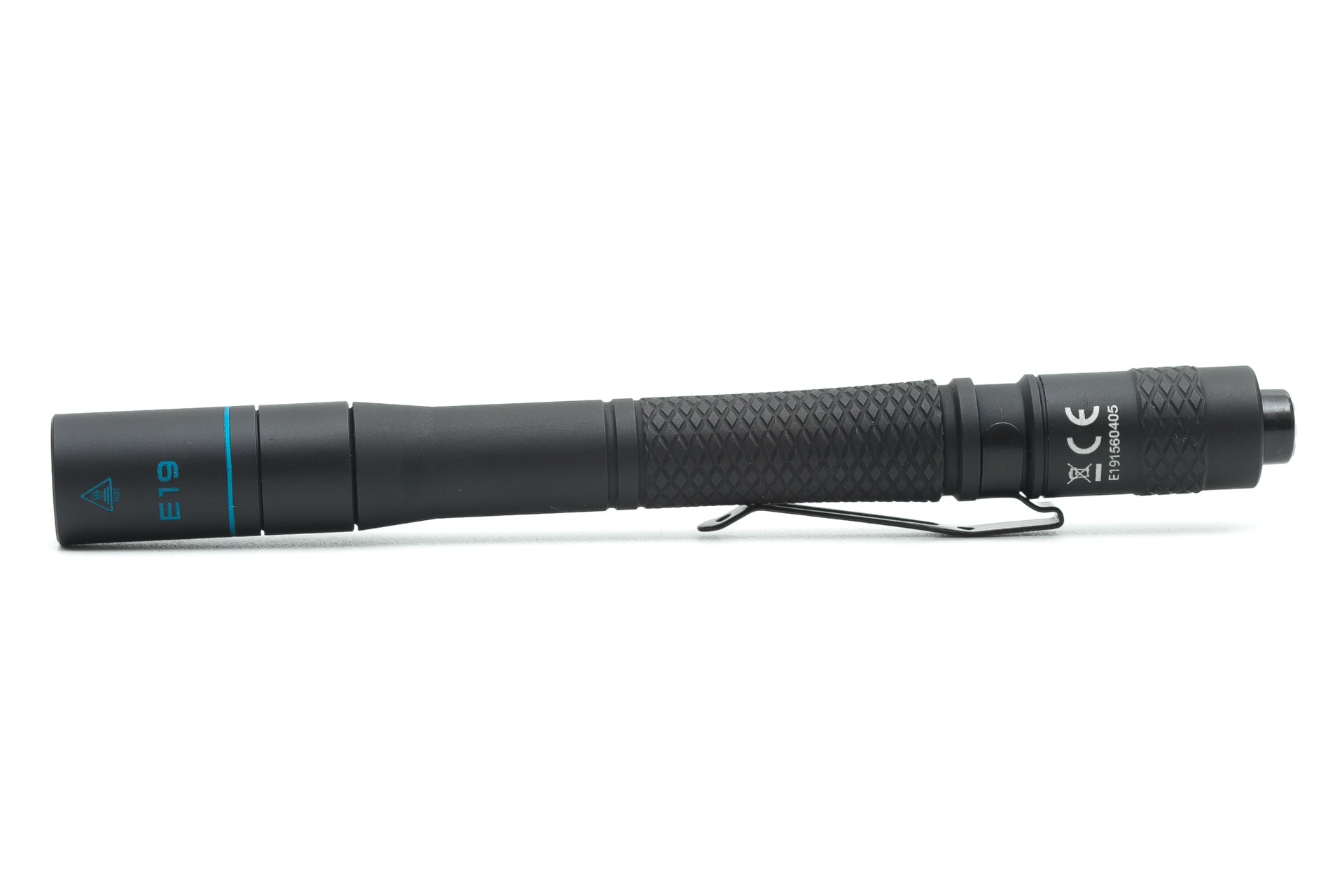
Wuben E19 specifications
| Brand/model | Wuben E19 |
|---|---|
| Category | Best penlights |
| LED | Nichia 219C |
| Lumens | 200 lm |
| Beam intensity | 770 cd |
| Battery config. | 2*AAA |
| Material | Aluminum |
| Modes | 4 |
| Blinkies | SOS |
| Reflector | Smooth |
| Waterproof | IP68 |
| Review date | January 2022 |
Introduction:
Wuben has lots of flashlights to offer, within a wide variety of categories. Varying between the smallest keychain light, to high-power flashlights like the Wuben A9. The flashlight at hand is the Wuben E19, which is a penlight running on 2*AAA batteries. Although, for some not one of the most appealing flashlights in their lineup, I am looking forward to reviewing many more penlights to see which ones are the best within this category. There are a ton, so we’ll pick the most appealing and do some comparisons.
We’ve reviewed already reviewed the Wuben E19 UV, which is the sister/brother of the E19 we are reviewing now. It’s basically the same flashlight but with a UV emitter instead of an LED.
Package quality.
The E19 has window box packaging and is retail-friendly with a hangtag for display. You can clearly see the flashlight, which is great if for people shopping at brick and mortar stores. These don’t really have any value if solely sold online. So yeah, having this clear window in the packaging is a pro for retail stores. So what’s on the inside:
- The Wuben E19
- Pocket clip (attached)
- 2 O-rings
- Manual
- 2 AAA Alkaline batteries
Before we go any further. If you use the flashlight daily, you don’t have to worry too much about Alkaline batteries, but if you intend to use it only sparingly, it’s better to replace them with rechargeable NiMH batteries.
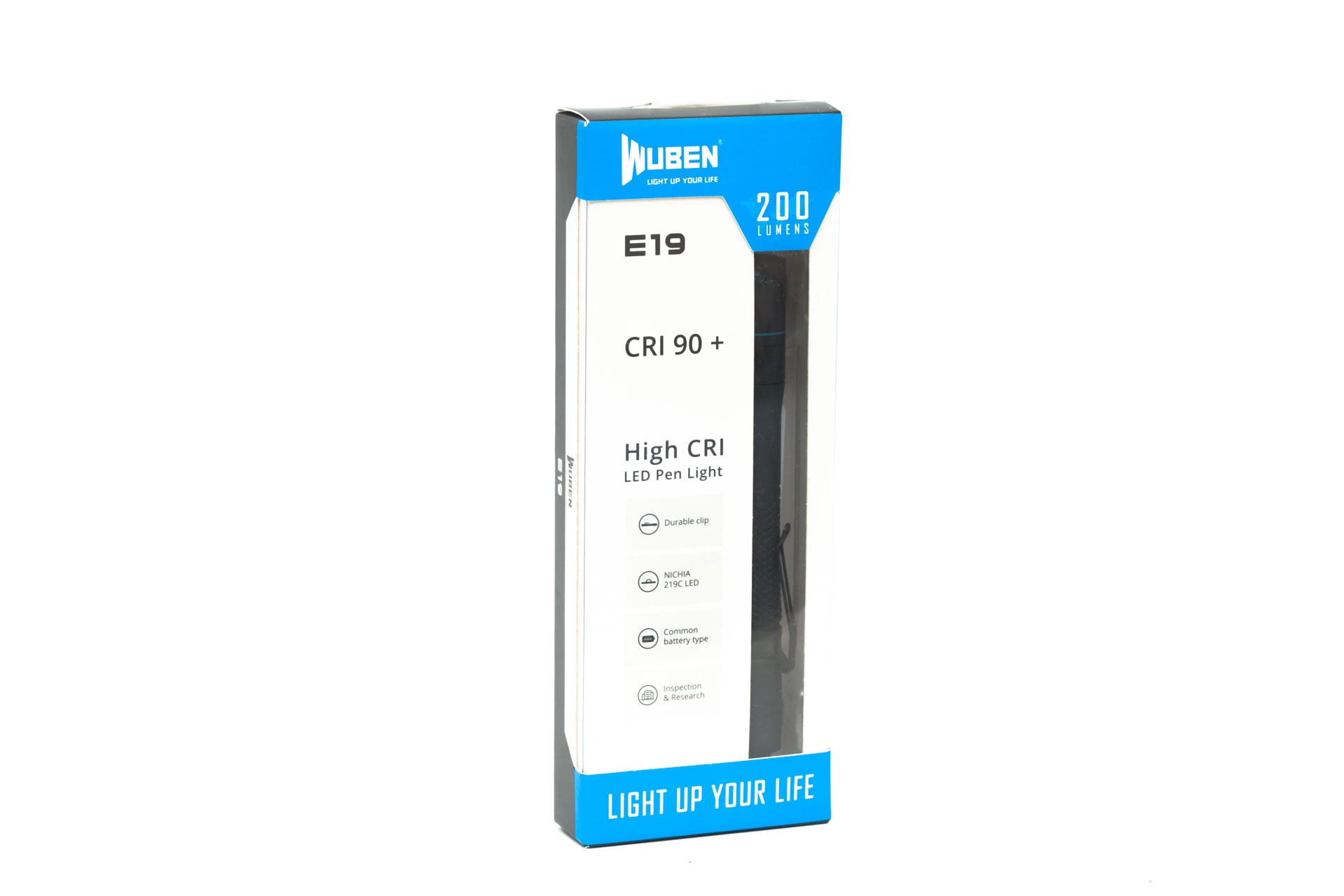
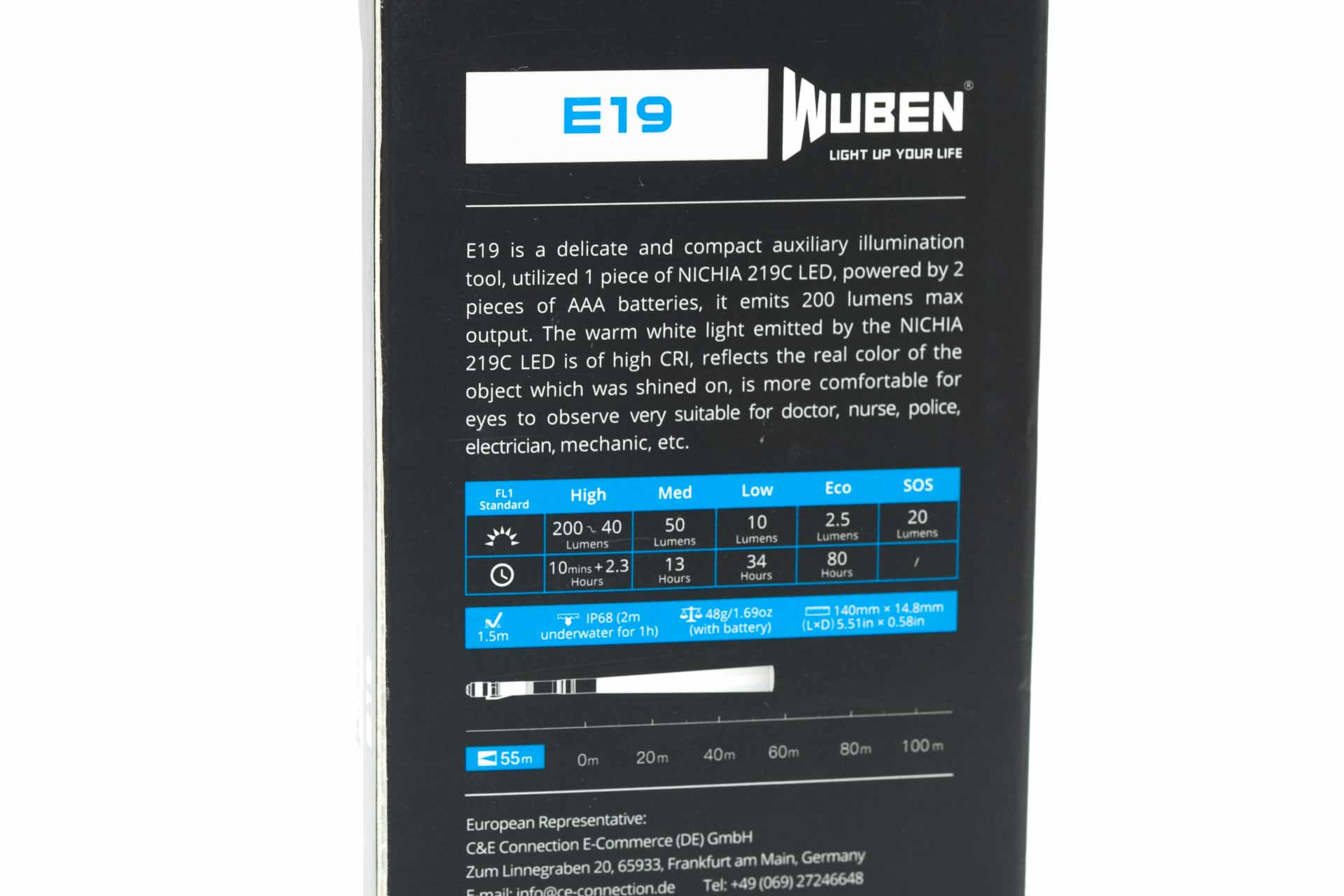
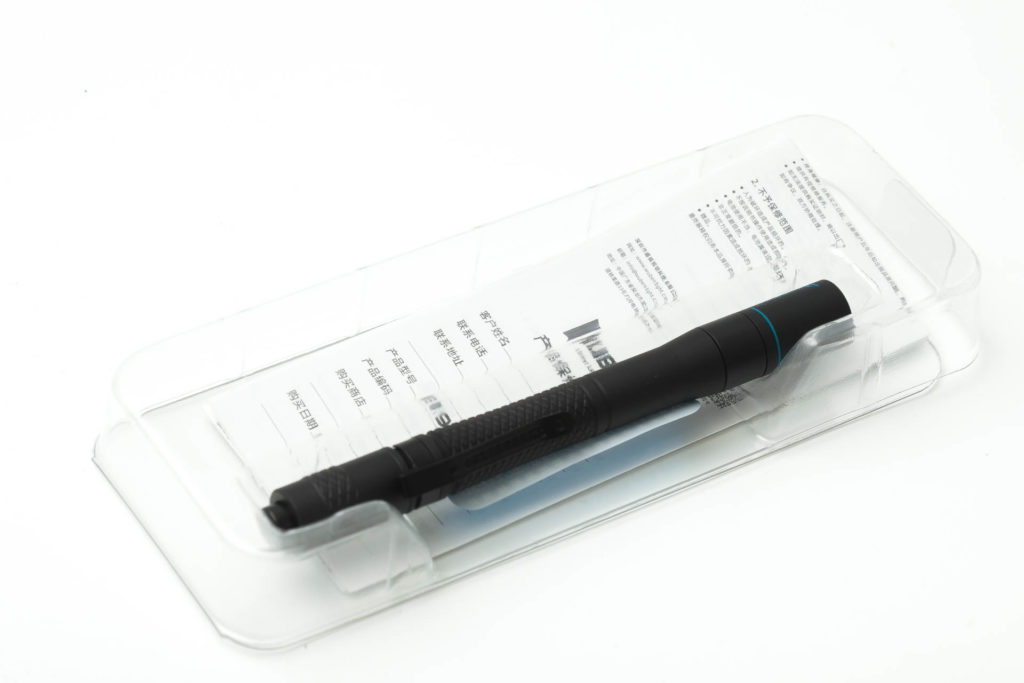
Flashlight in use
Like all penlights, the shape is pointy and thin. Great to tuck in your shirt pocket or even onto a baseball cap. But that doesn’t mean they are built of low quality.
One thing that I noticed on some of the penlights I’ve seen so far, is the lack of knurling. But fortunately, the Wuben E19 has knurling on the rear side of the battery tube, as well as on the tailcap. So if you’re working in slippery or wet environments, this might be something to look out for.
There’s only 1 switch, and it’s located at the tailcap. It’s a reverse-clicky switch and it feels a little different from your regular flashlight switch. If this is the only light you use, you’ll probably get used to it, but changing modes with this switch is a little inconvenient to me, honestly. The spring inside the switch might be a little too weak, so it happens regularly that I actually turned the light off by doing a full click instead of a tap. The distance between a tap and a full click is very close, so keep that in mind.
To carry this penlight, you’re likely tucking it in your pocket or using the attachable pocket clip. The clip itself is a little thin, but if you’re not using too much force, it should work for a long time. Having the clip attached will also function as an anti-roll feature, in case you lay it on a flat table.
Oh, and in case you wondered, the switch is protruding, you can’t make it tailstand.
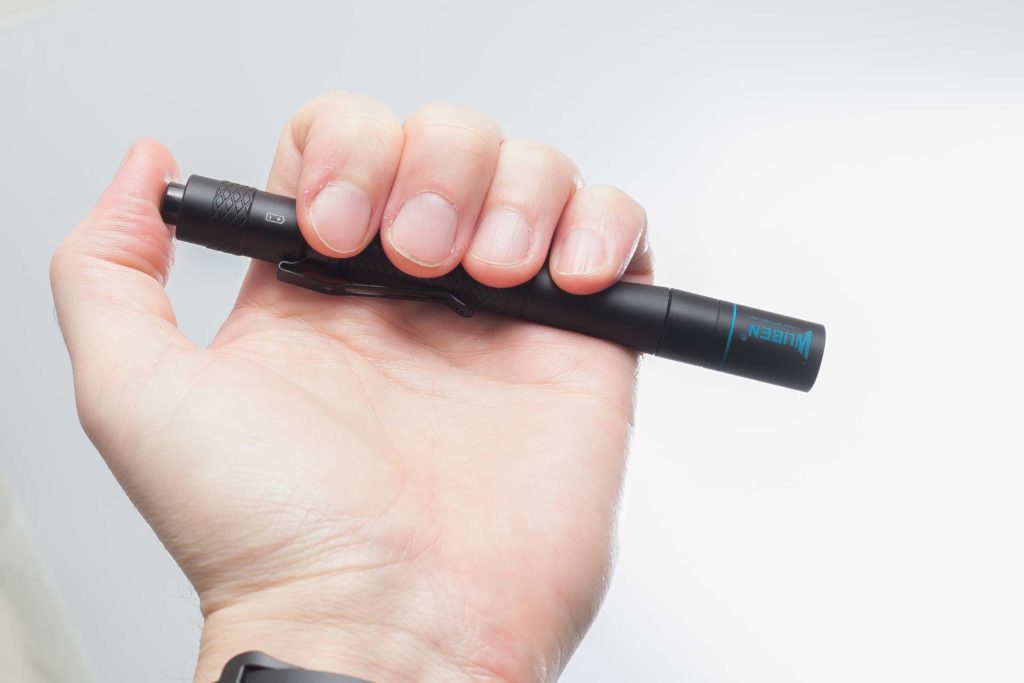
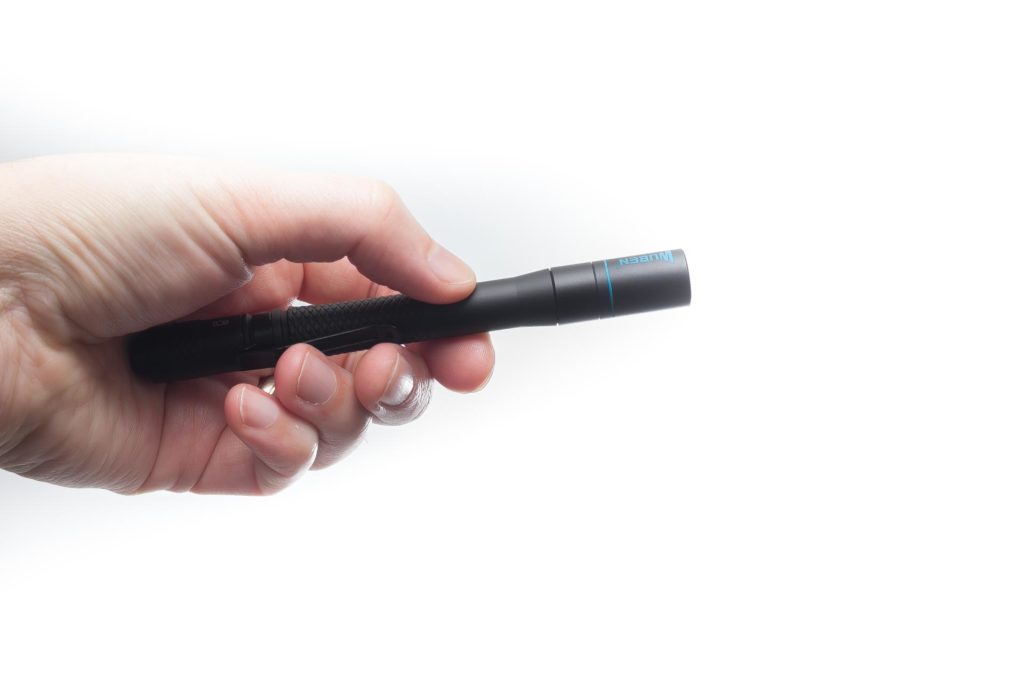
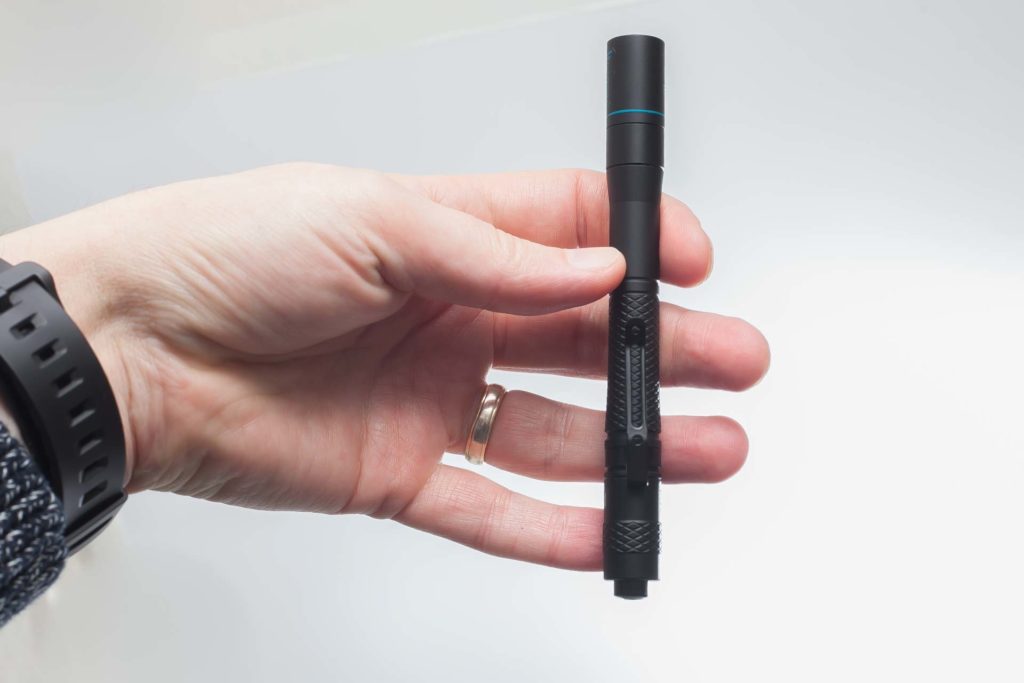
Build Quality, and Warranty
All penlights have something in common: thin threads. So it’s not something unique to the Wuben E19, but the threads on the tailcap/body tube are pretty thin. Not to the point where you’ll cross-thread them each time you attach the tailcap though. And the tailcap doesn’t have to be fully tightened to make the E19 work, because it has bear threads.
Besides the tailcap, nothing can be unscrewed, so all parts are probably glued to keep modders out.
The black anodization across the light looks pretty good with a pretty nice matte finish. The Wuben Logo and model name are printed in blue. It feels like they are on top of the anodization, and not inside so to say. And if you’re more into colored flashlights, they also have a
Even if the pocket clip looks a little thin and weak, it’s not so easy to remove. If you’re someone that like to remove the pocket clip a lot, you probably have some trouble doing this the first few times. I’m not kidding, this pocket clip sits pretty snug.
When it comes to warranty, Wuben offers:
- 5 year warranty coverage for the flashlight
- 1 year coverage for batteries
- Lifetime maintenance (paid repair) for registered customers
- More info: https://www.wubenlight.com/blogs/news/how-to-get-5-years-product-wattanty-from-wuben
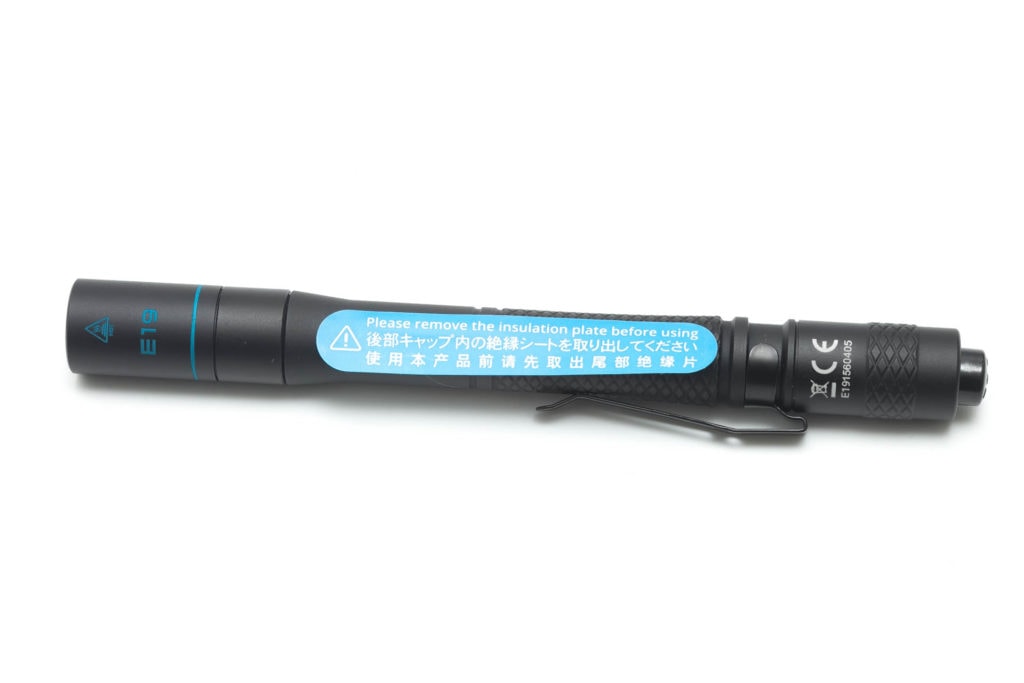
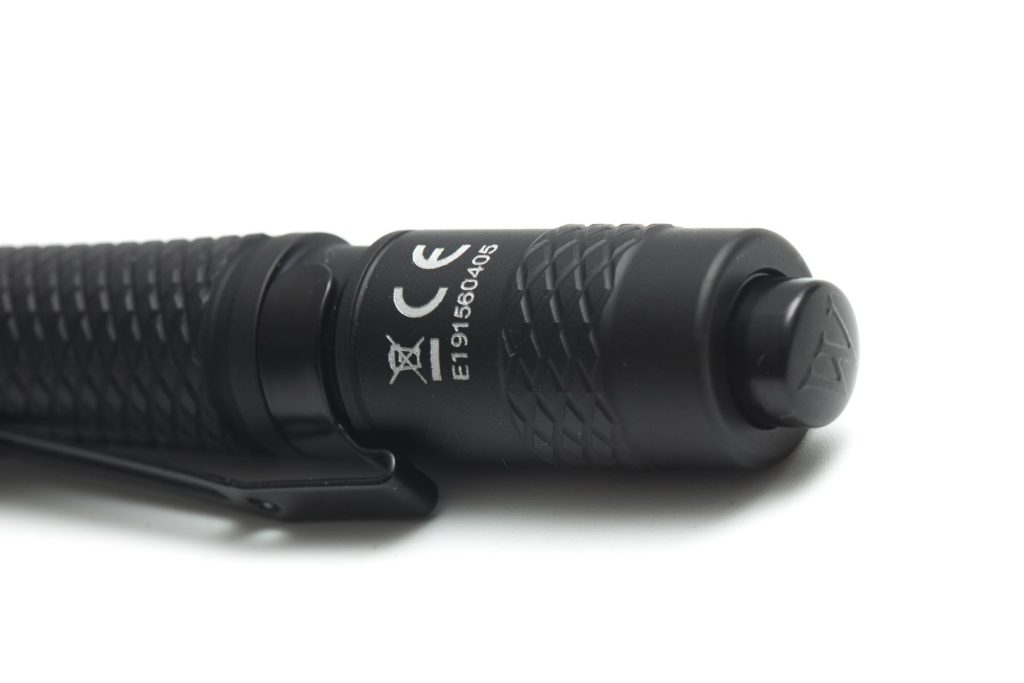
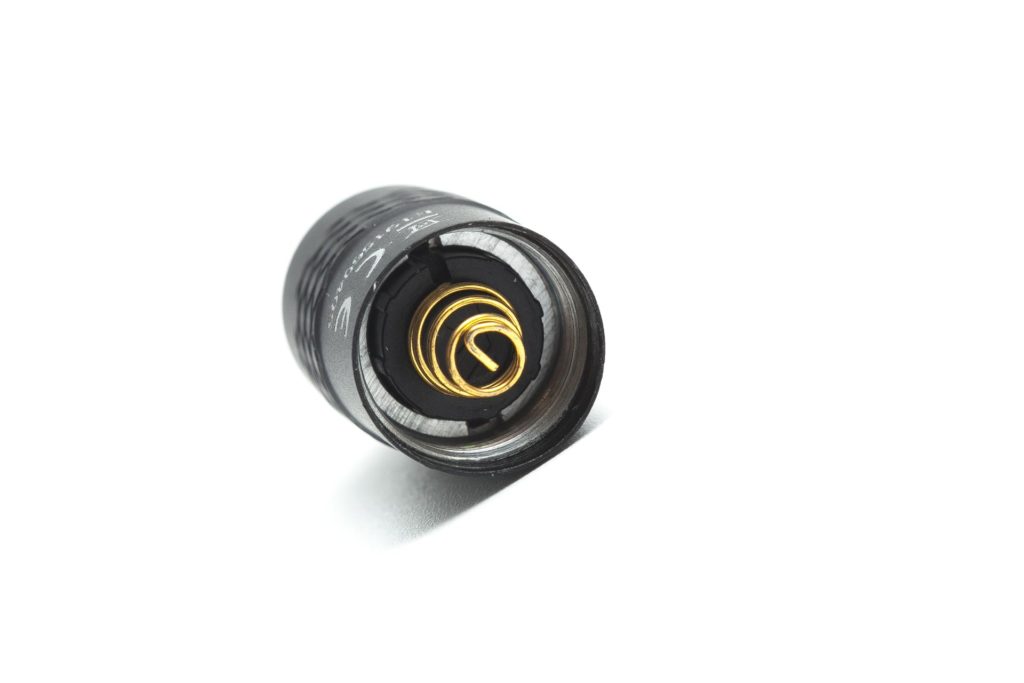
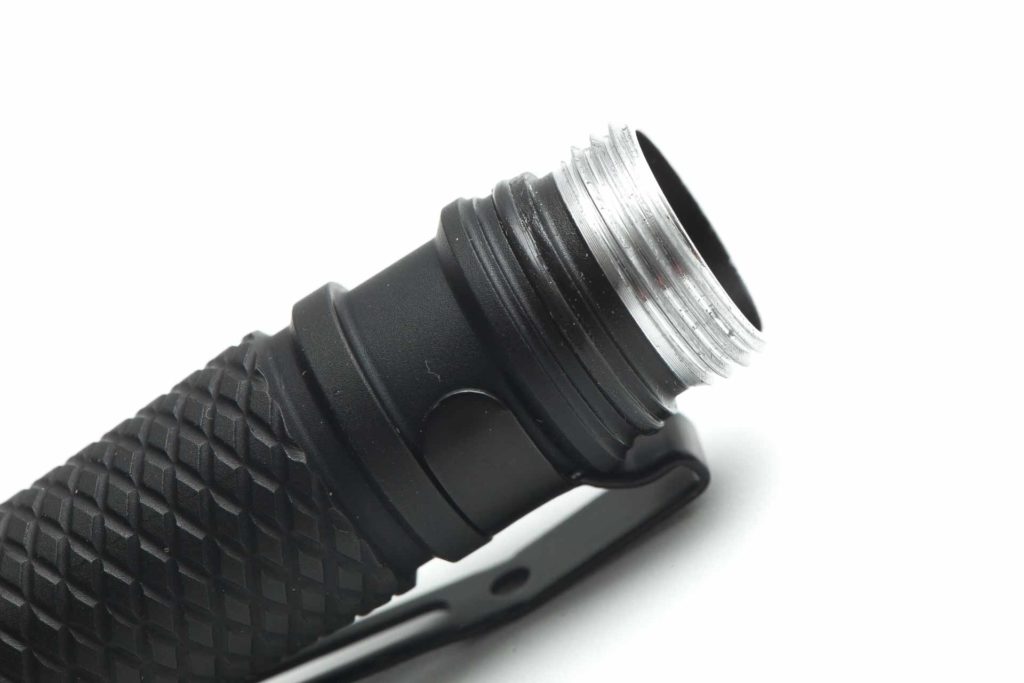
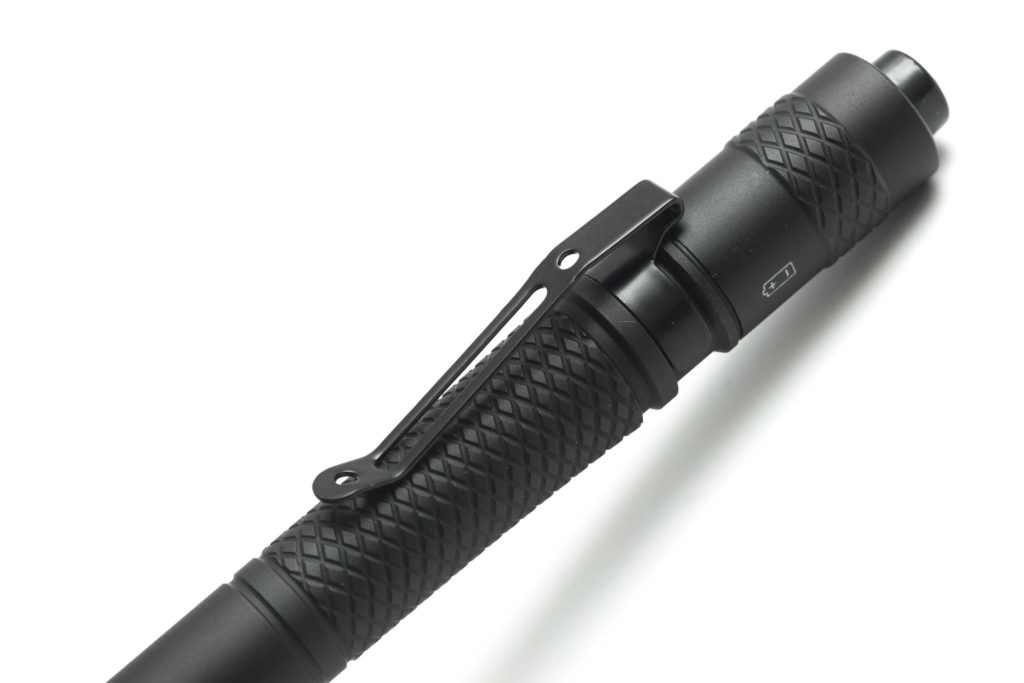
LED, Lens, Bezel, Beam, and Reflector
There are several kinds of use cases for penlights. Most people probably think about professions like doctors, nurses, and other healthcare professionals. But there are also many people who use them at construction sites or maintenance engineers.
So depending on the type of work you do (or the application), it’s important to know what kind of LED you need. I can understand that nurses don’t want cold white or warm white emitters, although warmer is probably still preferred.
The E19 is only available in warm white, with a color temperature of somewhere between 4100K and 4400K, and a DUV of -0.0029, according to my measurement with the Opple Lightmaster III
- CCT: 4100-4400K
- CRI (Ra): 93.9
- DUV: -0.0029
For close-up work, an orange peel reflector would have been nice, but Wuben chose a smooth reflector instead.
The beam has a clear center hot spot, but it looks a little different. The inside of the hotspot is yellowish, while the outer ring in the hotspot is colder.
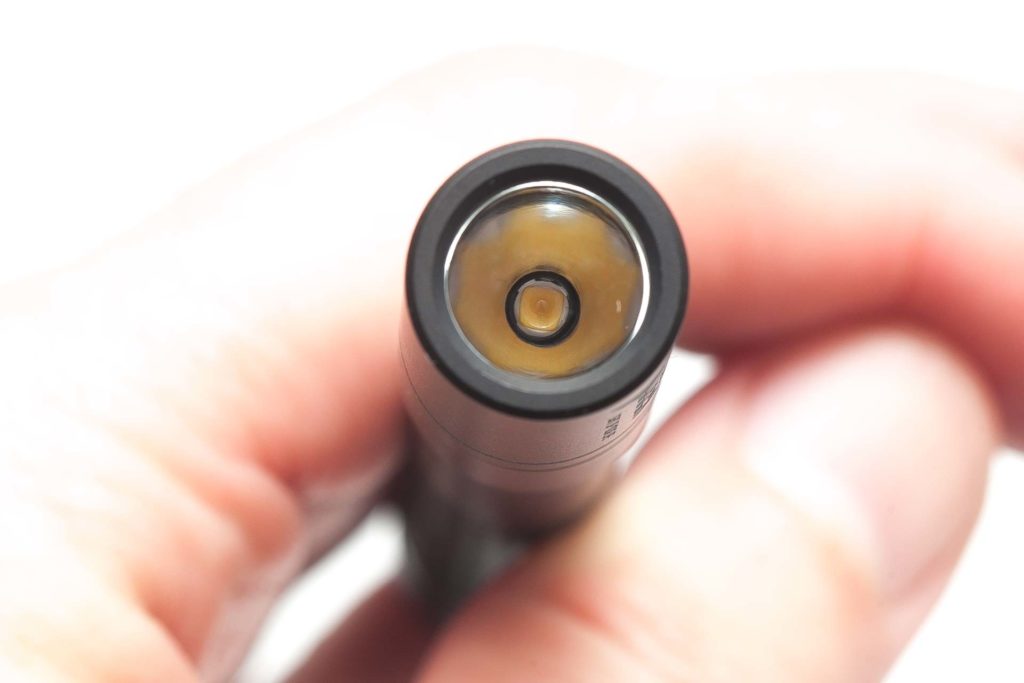
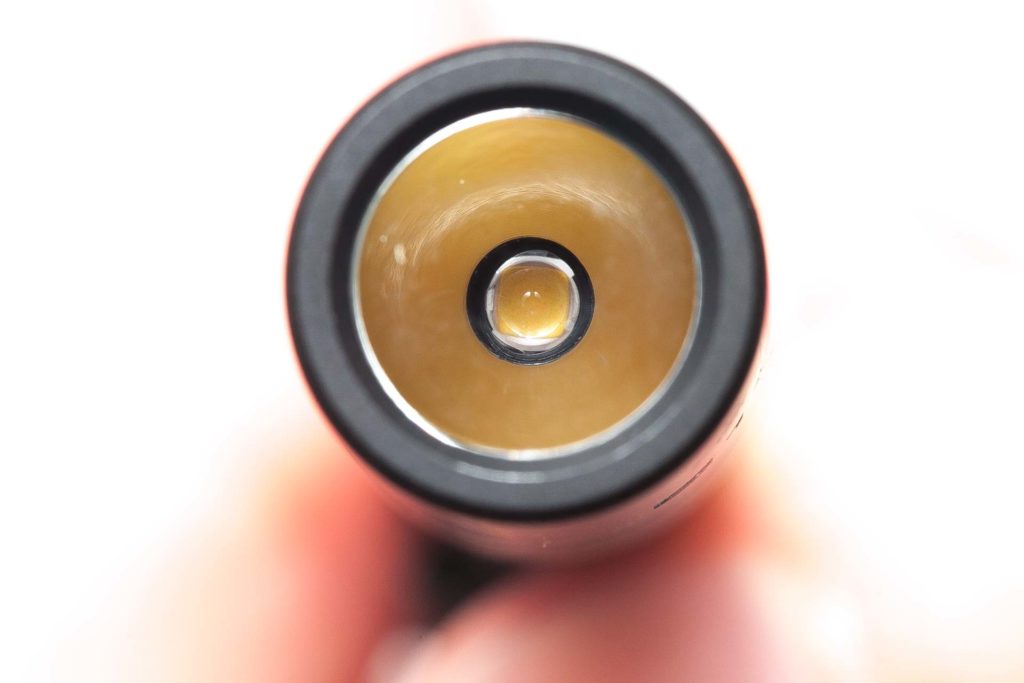
Dimensions and size comparison
- Length: 139.5 mm / 5.49 ”
- Head diameter: 14.75 mm / 0.58 ”
- Body diameter thinnest part: 12.5 mm / 0.49 ”
Weight:
- Empty: 23.7 g / 0.84 oz
- With 2 eneloops battery: 47.4 g / 1.67 oz
Penlight comparison
Size compared to other penlights:
Image 1, front view, from left to right: Lumintop IYP365, Olight i3T Plus, Acebeam PT10 GT, Wuben E19
Image 2, some of the best penlights: Acebeam Pokelit 2AA, Olight i5T Plus, Wuben E19, Acebeam PT10GT, Olight i3T Plus, Weltool M6-Dr, Wurkkos WK02, Nitecore MT06MD, Lumintop IYP365.
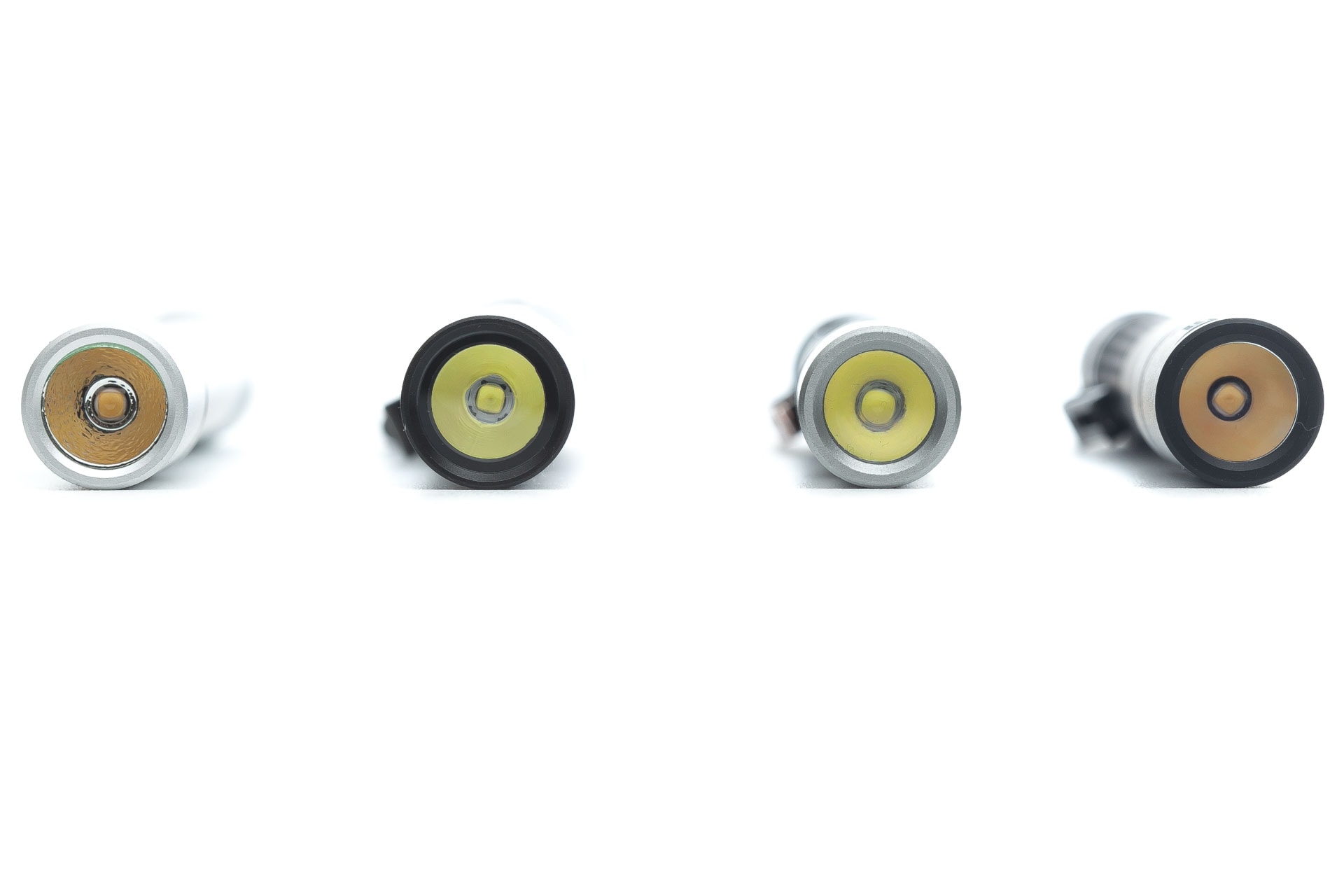
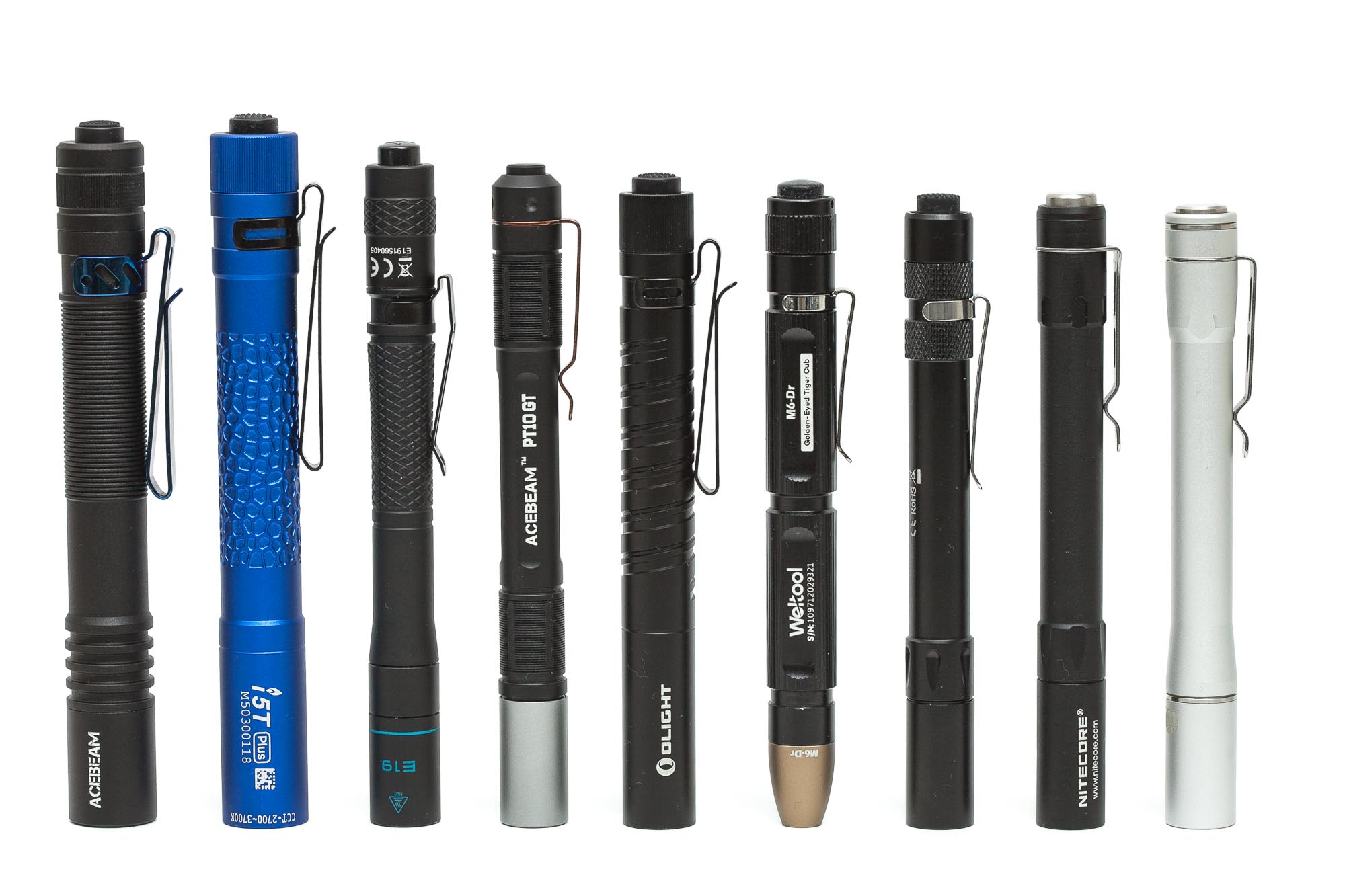
Driver & User Interface:
The user interface is pretty easy and straightforward, but using the switch might be something you have to get used to. It’s pretty easy to accidentally switch the light off instead of switching modes.
Available modes:
- Eco, Low, Medium, High,
- SOS
From OFF:
- Half-press: nothing
- Single-click: to last used mode (mode memory)
From ON:
- Half-press: Cycle through the menu from Eco to High
- Single-click: turns off
- Triple-tap: SOS
Shortcuts:
- There are no real shortcuts
Mode memory:
- Yes
Blinky modes menu:
- Only SOS, and I don’t really know why that is. But maybe I haven’t had enough experience with penlights, so this is also a learning process for me.
Low battery warning:
- When the battery goes really low, the output gets really low, but there is no special low battery warning.
Lock-out mode:
- No, just use the mechanical switch
PWM:
- Not visible, not even in the lowest Eco mode.
Firmware / UI Conclusion:
I’m not really sure for who this UI was built. Mode memory could be problematic when used in a hospital. You could blind a patient with it for a few seconds, if the last used mode was High.
Batteries & Charging
The E19 isn’t considered a ‘rechargeable flashlight’. They included 2 AAA Alkaline batteries. To keep the cost, and the weight down I suppose, they didn’t include any kind of USB port.
Wuben warns against using lithium-ion batteries, as they are likely to burn the thing to the ground. Just get a bunch of rechargeable AAA batteries like the Panasonic Eneloop.
If you don’t like using rechargeables, and you use the penlight very often, I could forgive you for using Alkalines. The only reason to do so, is because you’ll notice when the light stops working. At that point the Alkaline batteries might only have leaked a little bit. If you use Alkalines and store the flashlight for a long time, you’re likely ending up with a broken flashlight. Alkaline batteries tend to leak, in any device, and even just in their own packaging. So I don’t recommend using them, only if you have to.
Performance
Lumen measurements:
All output numbers are relative to my homemade Integrating Sphere. It is set up with an Extech SDL400 Lux Meter for measurements including a Kenko PRO1D ND-16 filter. The base measurement is done with a Convoy S2+ that has been tested at 255 lumens.
For Amp readings, I use a Fluke 77III DMM. For higher amps I now use a Fluke 325 True RMS clamp meter. For microamps, I use a cheap DMM with an easy-to-use micro amp setting.
All of my readings were taken from 2 fully-charged Eneloop AAA’s with 750mAh.
(Italic text is according to specs)
| Mode | Amps | Specs | turn on | 30sec | 10min |
|---|---|---|---|---|---|
| Eco | 0.025A | 2.5 lm | 2.36 | 2.36 | – |
| Low | 0.05A | 10 lm | 9.45 | 9.42 | 9 |
| Med | 0.14A | 50 lm | 39 | 37 | 23 |
| High | 1.24A | 200 lm | 189 lm | 182 lm | 38 lm |
Parasitic drain:
- There shouldn’t be any because it’s a mechanical switch
Runtime:
The runtime test was done with the 50cm integrating sphere, including the Kenko Pro1D ND-16 filter and Extech SDL400 data logging Lux Meter.
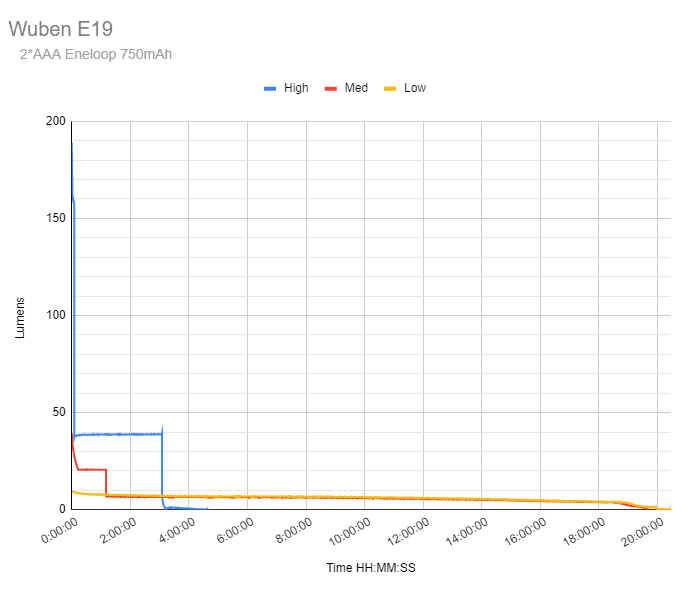
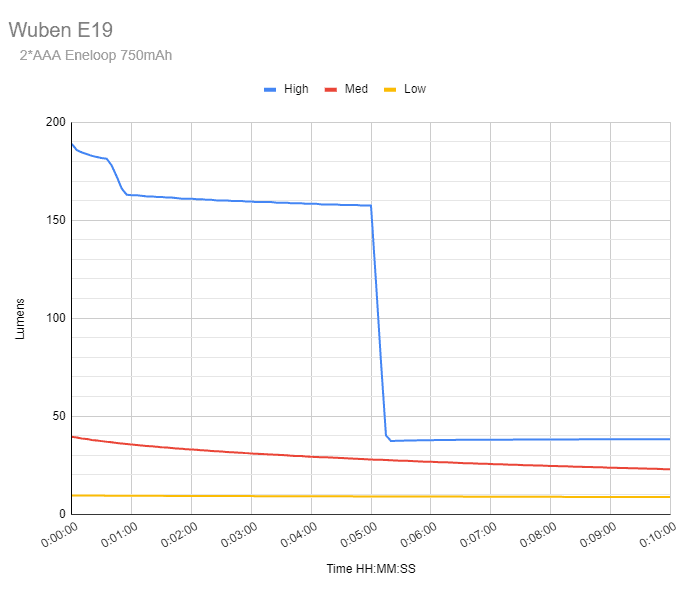
High: starts off at around 189 lumens and slowly drops till it reaches 157 lumens at 5min, and then drops to 38 lumens. It maintains that output till 3h04min when it drops to a sub lumen output.
Medium: starts at around 39 lumens, and slowly drops off to 21 lumens and sustains that till 1h10min when it drops to about 7 lumens. From then onwards it slowly reduces output till it measures 0lumen at 19h40min. But the runtime is measured till 10% of the initial output, which is 39 lumens, so the runtime finishes officially around 4 lumen, which is around the 16h mark.
Low: pretty stable at around 8-9 lumens, but slowly decreases till it reads 0lumen at 19h57min. The official runtime would have to be 1 lumen.. and that’s reached around 19h30min.
Eco is not measured, as it is supposed to run for 80 hours. And it’s very likely that my lux meter will run out of batteries long before it finishes the test.
Throw Measurement
Measurements were taken indoors at 2 meters distance (after 30 seconds) with a professional Hagner E4-X Lux Meter.
| Mode | Specs | Candela | Meters | Yards |
|---|---|---|---|---|
| Eco | – | 16 cd | 8 | 9 |
| Low | – | 56 cd | 15 | 16 |
| Med | – | 160 cd | 25 | 28 |
| High | 770 cd (55m) | 1180 cd | 69m | 75 |
That’s not bad for a penlight! It’s performing quite a bit better than specs.
Beamshots
For the following beamshots, I used a Canon EOS 5D Mk2 and a 50mm lens. manual settings: ISO1600, 1/4sec , F4, 5000K
The wall is about 5 meters / 6 yards away.
Unfortunately, I still haven’t found a good place to do beamshots for these smaller lights, so I hope this will give at least an impression. Also, I need to clean that wall… lol
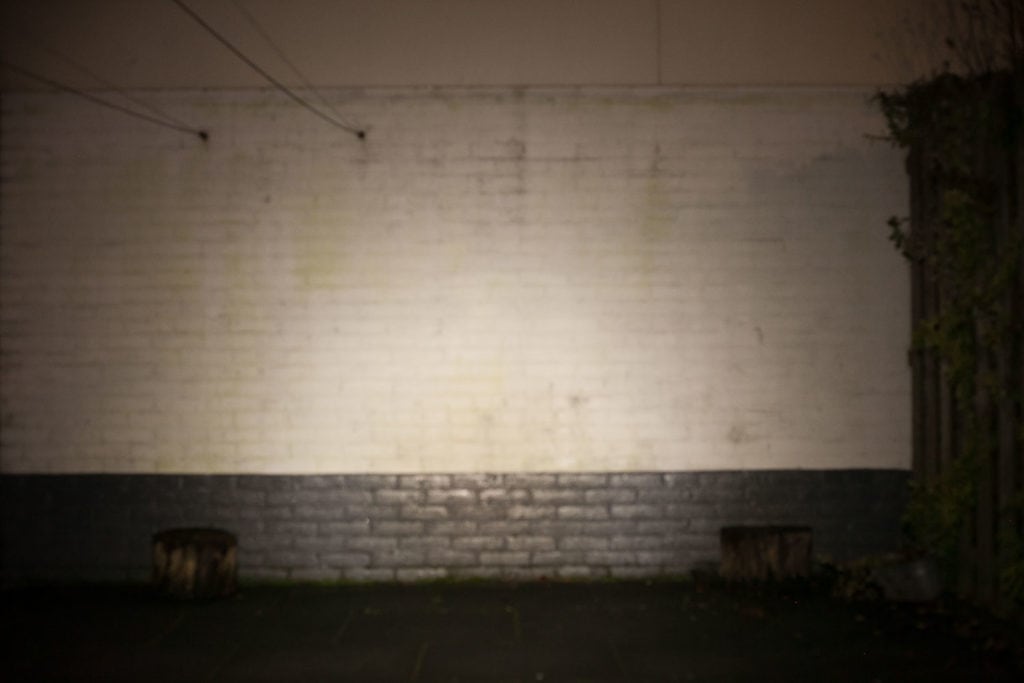
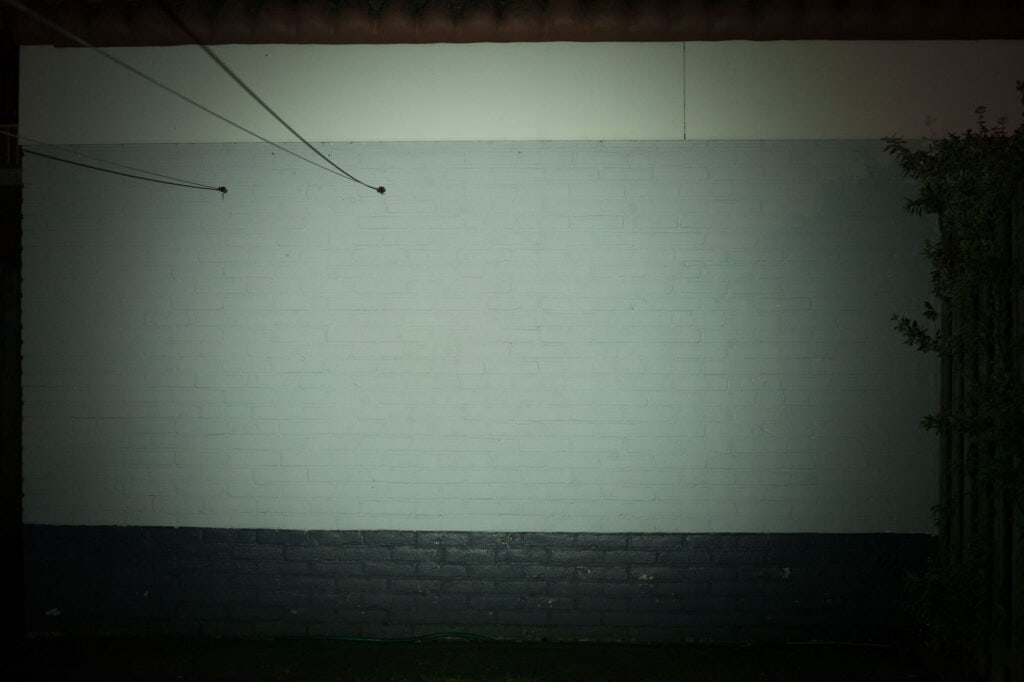
Disclaimer: This flashlight was sent to me for review at no cost by Wuben. I have not been paid to review, nor have I been holding back on problems or defects.
Final Verdict
Pros
- High CRI
- Uses easily available batteries
- Lightweight
- Nice design
Cons
- UI/Switch: switching modes is a little difficult to do without accidentally turning the light off
- Mode memory can be good/bad for this type of light, depending on the use case
Explanation on star ratings:
1: Avoid: my phone flashlight would be a better choice – 2: Poor: significant defect or issues; almost unusable – 3: Average: some defects or issues; but still usable 4: Good: recommended (minor issues) – 5: Great: highly recommended

4.0 stars: ★★★★⋆
Penlights aren’t really built for high output, and the Wuben E19 isn’t either. It’s using a high CRI Nichia emitter and
Buy Wuben E19 with a discount
If you buy directly from Wuben, make sure you use our exclusive discount code. Add coupon code 1Lumen20 at checkout to get 20% off.
1lumen selects and reviews products personally. We may earn affiliate commissions through our links, which help support our testing.